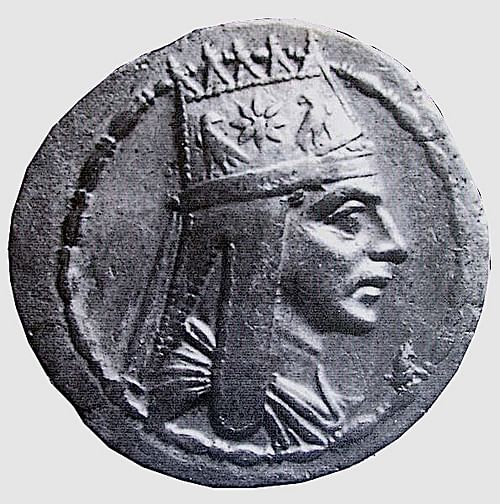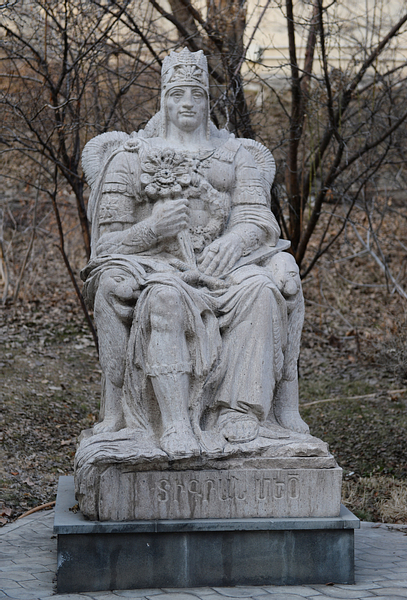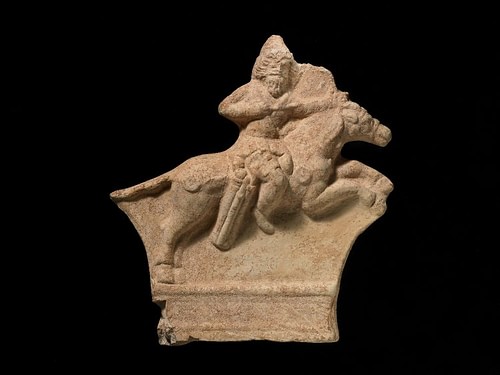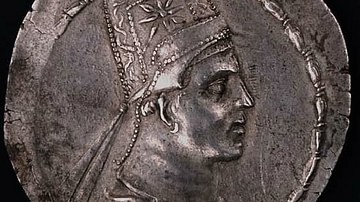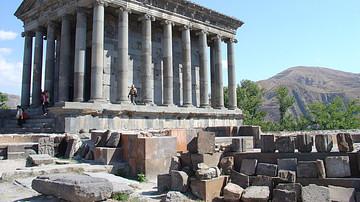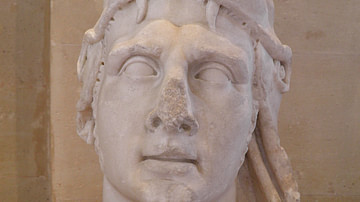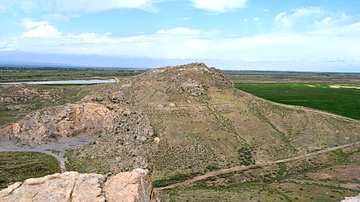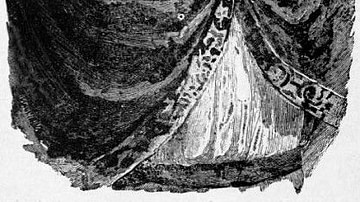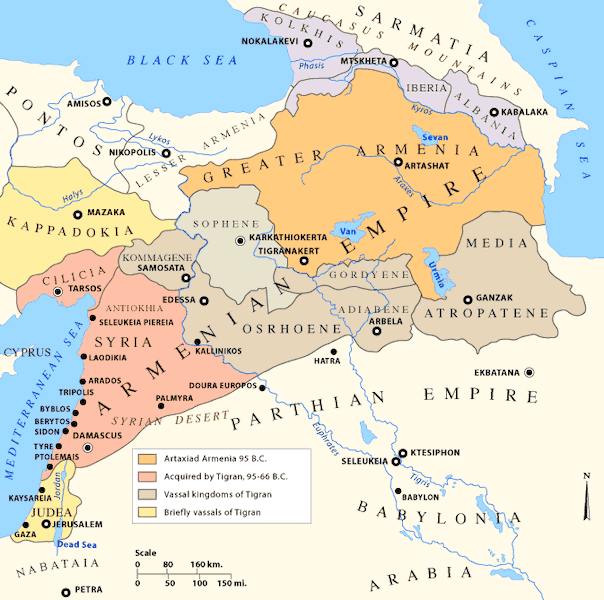
Tigranocerta (Tigranakert) was a city in the southwest of ancient Armenia founded and made capital by Tigranes the Great in 83 BCE. Famous for its riches and fine buildings, as well as its mix of Hellenistic and Persian culture, the city, despite possessing impressive fortifications, was captured twice by Roman armies in 69 BCE and 59 CE. Continuing as an important settlement into Late Antiquity, it was then abandoned and its precise location has been lost in the mists of time.
Foundation
One of the greatest of the Artaxiad kings, or indeed any Armenian king, was Tigranes II (Tigran II) or Tigranes the Great (r. c. 95 - c. 56 BCE). He expanded his kingdom considerably and at its peak, the Armenian Empire stretched from the Black Sea to the Mediterranean. Not before or since would Armenians control such a huge swathe of Asia. Tigranes was noted as an admirer of Greek culture - not insignificantly, his wife was Cleopatra of Pontus - and he followed the Hellenistic trend of rulers founding a new city and naming it after themselves. Tigranocerta, meaning “Tigranes' foundation”, was founded in 83 CE and it was made the capital city of the new empire of Armenia.
Due to a lack of any archaeological evidence, the precise location of the city is not known beyond that is was somewhere in the southwest of ancient Armenia, which was a more central position than the old capital of Artaxata (Artashat) given the kingdom's recent expansion. It was probably located along the River Tigris on the Persian Royal Road trade route with two possible candidates being near modern Diyarbakir or Siirt (both in today's southeast Turkey). An added advantage was that the location in the south was much closer to the newly acquired and immensely rich territory of Syria. One of the negative aspects of the new location was its vulnerability to attack and relative isolation from the Armenian heartland - a fact which would be twice exploited by Roman field commanders.
A Cosmopolitan City
Tigranocerta was famously Hellenistic in its architecture although it was specifically designed to reflect the mixed cultural heritage of the country with Greek, Persian, and Armenian elements. The city had impressive fortifications with the walls reaching a height of 22-26 metres and incorporating stables, such was their thickness. There were also many amenities including a Greek theatre, a palace built in the Persian style outside the city walls, a fort, hunting parks and pleasure gardens. Tigranes was said to have forcibly relocated (a traditional figure of) 300,000 people to the new capital form 12 different cities, most of them in Cappadocia. According to the 1st-century BCE Greek historian and geographer Strabo, the largest contingent of forced migrants came from Mazaka in Cappadocia.
As the centre of a prospering empire with trade links to both Mesopotamia and Phoenicia, material wealth flooded into the city from all directions, as the 1st-2nd-century CE Greek historian Plutarch here notes:
…the city was also full of wealth…since every private person and every prince vied with the King in contributing to its increase and adornment. (Lucullus, 26:2)
The fabled wealth of Tigranocerta at this time was still dazzling historians writing in the 5th century CE, as in this description of Tigranes by the Armenian historian Movses Khorenatsi in his History of the Armenians:
He multiplied the stores of gold and silver and precious stones, of garments and brocades of various colours, both for men and women, with the help of which the ugly appeared as wonderful as the handsome, and the handsome were altogether deified at the time…The bringer of peace and prosperity, he fattened everyone with oil and honey. (quoted in Hovannisian, 56-7)
Such a prosperous city attracted people from all over, and many Greek philosophers and rhetoricians were invited to share their ideas at Tigranes' court. Greek actors were even brought in to inaugurate the theatre of the capital. Further reflecting the cosmopolitan nature of the city, and the empire in general, the Greek language was likely used, along with Persian and Aramaic, as the language of the nobility and administration while commoners spoke Armenian. Persian elements continued to be an important part of the Armenian cultural mix, too, especially in the area of religion and the formalities of the court such as titles and dress.
Battle of Tigranocerta 69 BCE
Tigranes may have built a large empire but he made a serious misjudgement when he allied himself with Mithridates VI, the king of Pontus (r. 120-63 BCE). Mithridates was a great enemy of Rome with the two states waging war for over two decades. Admittedly, Tigranes had been married to Mithridates' daughter Cleopatra since 92 BCE and, really, it seemed that whichever side Armenia chose - Rome or Parthia - the small kingdom caught between these great empires would always come off second best.
The Roman Republic saw the danger of such an alliance between the two regional powers, a suspicion which was confirmed by a joint Tigranes-Mithridates campaign against the Roman client state of Cappadoccia. The Romans responded by attacking Pontus, and when Mithridates fled to the court of Tigranes in 70 BCE, they asked for the former to be handed over. When Tigranes refused, the Romans invaded Armenia. Tigranes was defeated by a Roman army commanded by the general Licinius Lucullus right outside the walls of the capital. Tigranocerta was then besieged in October 69 BCE as described by the 2nd-century CE historian Appian in his Mithridatic Wars:
[The Romans commanded by Sextilius] plundered the palace outside the walls, drew a ditch around the city and tower, moved machines against them, and undermined the wall. While Sextilius was doing this, Tigranes brought together some 250,000 foot and 50,000 horse. He sent about 6,000 of the latter to Tigranocerta, who broke through the Roman line to the tower, and seized and brought away the king's concubines. (17:84)
The siege, nevertheless, continued and following the betrayal of the Greek garrison, Tigranocerta was captured and sacked. The conquering Romans were amazed at the wealth of Tigranocerta even after Tigranes had already managed to spirit away part of his royal treasury and personal harem. The looters found 8,000 talents in gold while each Roman legionary received 800 drachmas. The inhabitants abandoned the city following its destruction, many of whom, of course, had been forcibly put there in the first place and were only too glad to return to their homelands.
Lucullus then moved to attack the important city of Artaxata, but with winter coming on, his supply line dangerously thin and exposed, and even a mutiny amongst his own troops, the Roman general was forced to withdraw. Tigranes' army harried the retreating Romans using guerrilla tactics, and Lucullus was recalled to Rome in 67 BCE. The respite would not last for long as the Roman Senate proved determined to stamp its authority on the region once and for all. In 66 BCE another Roman army headed eastwards, this time led by Pompey the Great. Roman victories followed, and Tigranes was shorn of his empire and forced to pay a huge tribute to Pompey. Armenia was made a protectorate of Rome, but at least Tigranocerta was rebuilt by Pompey and then reinhabited.
Roman-Parthian War 58-63 CE
The city once again found itself under attack during the Roman-Parthian war of 58 to 63 CE. Armenia was, yet again, disputed territory in a greater game of empires, and in 54 CE the Roman emperor Nero (r. 54-68 CE) sent his best general Gnaeus Domitius Corbulo to assert Rome's position in the region following the attempt by Parthian king Vologases I (aka Vagharsh, r. c. 51- up to 80 CE, dates disputed) to put his own brother Tiridates on the Armenian throne.
During the campaign Tigranocerta, then the country's second most important fortress city after the capital Artaxata, fell to the Romans in 59 CE:
Soon afterwards, Corbulo's envoys whom he had sent to Tigranocerta, reported that the city walls were open, and the inhabitants awaiting orders. They also handed him a gift denoting friendship, a golden crown, which he acknowledged in complimentary language. Nothing was done to humiliate the city, that remaining uninjured it might continue to yield a more cheerful obedience. (Tacitus, Annals, Bk. 14:24)
By 60 CE, Corbulo could claim to rule over all of the Kingdom of Armenia and Tiridates was forced to flee back to his brother in Parthia. In the same year, Tigranes V (r. c. 60-61 CE), who had impressive royal connections being the grandson of Herod the Great, was set on the throne as a pro-Roman monarch. Tigranes V's cameo reign came to an abrupt end when the Parthians sent an army to besiege him in Tigranocerta in 62 CE. The city held out, but when Corbulo returned to the field from Syria in 63 CE, his presence alone persuaded Parthia to sign the Treaty of Rhandia. Under this treaty, it was agreed to equally share the responsibility of ruling Armenia between Rome and Parthia.
Late Antiquity
Continuing as an important regional city over the next few centuries, Tigranocerta came directly under Roman governance in 387 CE following an agreement between Rome and the Sasanian Empire. The new overlords then renamed the city Martyropolis. In 536 CE, when the Byzantine emperor Justinian I reorganised the administration of the region, Armenia was split into four areas or provinces and Martyropolis made capital of Armenia IV. In 640 CE, when the Arab Umayyad Caliphate conquered Armenia, the city was renamed again, this time Mayarfarkin.
This article was made possible with generous support from the National Association for Armenian Studies and Research and the Knights of Vartan Fund for Armenian Studies.
